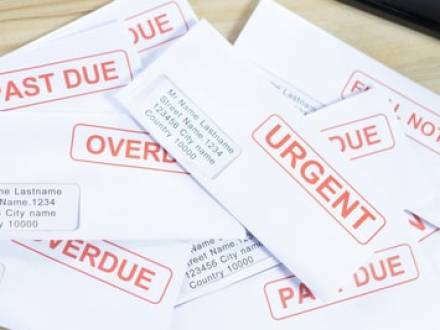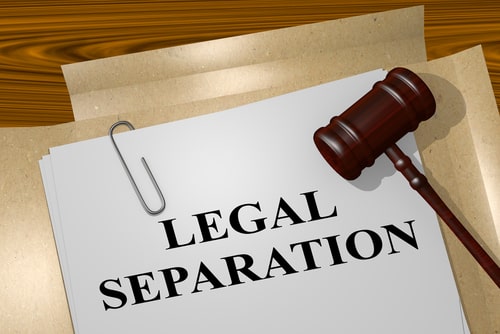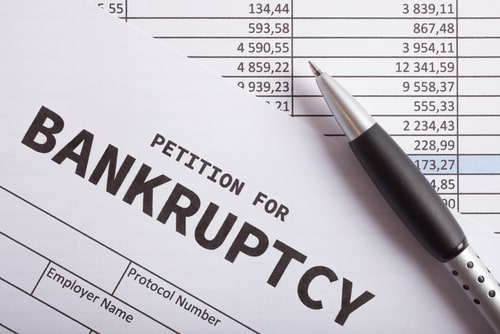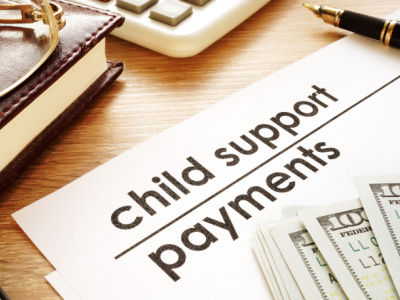Recent Blog Posts
How Is Parenting Time Split in Illinois?
 Figuring out how to divide physical custody is one of the biggest hurdles for parents going through a divorce. There is no one "right" way to allocate parenting time, but in any case, the arrangement must put the child’s best interests first. If you are in the midst of a custody dispute, an Illinois family law attorney can advocate for a favorable parenting time schedule on your behalf.
Figuring out how to divide physical custody is one of the biggest hurdles for parents going through a divorce. There is no one "right" way to allocate parenting time, but in any case, the arrangement must put the child’s best interests first. If you are in the midst of a custody dispute, an Illinois family law attorney can advocate for a favorable parenting time schedule on your behalf.
Intense custody battles can be draining for all parties involved, especially the children caught between parents. At The Thomas Law Office, we are ready to work toward a long-term solution that promotes your child’s well-being.
Parental Fitness
Parental fitness is one of the most significant factors in allotting child custody. In this context, "fitness" refers to a parent’s ability to take care of a child. Assuming both parents can provide for a child’s needs, they may have equal rights to parenting time. However, certain factors may lead to a parent being deemed unfit, such as:
Benefits of Filing for Chapter 13 Bankruptcy
 When your debts become too overwhelming to manage on your own, a Chapter 13 bankruptcy can give you some much-needed relief. That being said, the process of filing for bankruptcy is anything but easy. You will have to draft a full repayment plan and attend a court hearing to get final approval from a judge. An Illinois bankruptcy attorney can guide you through the steps, making sure your rights are protected.
When your debts become too overwhelming to manage on your own, a Chapter 13 bankruptcy can give you some much-needed relief. That being said, the process of filing for bankruptcy is anything but easy. You will have to draft a full repayment plan and attend a court hearing to get final approval from a judge. An Illinois bankruptcy attorney can guide you through the steps, making sure your rights are protected.
Attorney Colleen Thomas has over a decade of experience in bankruptcy law. When you work with our firm, you can take heart knowing that Attorney Thomas will handle your case personally, rather than passing it off to another lawyer or a paralegal.
There are numerous benefits to filing for Chapter 13 bankruptcy. We can assess if you are eligible for this type of bankruptcy and take the steps to file the petition on your behalf.
Protection from Creditors
If you are late on secured loan payments with collateral, your creditors could threaten to seize that collateral. This is especially concerning for mortgages, as you could be at risk of foreclosure if you fall behind on payments. A creditor can also seize your vehicle for delinquent payments on a car loan, leaving you and your household without reliable transportation.
Should I Consider Legal Separation Instead of Divorce?
 In a legal separation, you make a lot of the same agreements you would make in divorce. However, with a legal separation, you remain legally married. A separation agreement can help you divide marital property, make a child custody plan, and settle family support obligations. Spouses who separate and then go on to get divorced in the future often convert their separation agreements into divorce agreements with few or no changes. However, you could also very easily return to living together as a married couple and it would be as if the separation never happened. You may also enjoy tax benefits that come from filing as a married couple if you so choose. A McHenry County, IL legal separation lawyer can represent you while you are creating a separation agreement.
In a legal separation, you make a lot of the same agreements you would make in divorce. However, with a legal separation, you remain legally married. A separation agreement can help you divide marital property, make a child custody plan, and settle family support obligations. Spouses who separate and then go on to get divorced in the future often convert their separation agreements into divorce agreements with few or no changes. However, you could also very easily return to living together as a married couple and it would be as if the separation never happened. You may also enjoy tax benefits that come from filing as a married couple if you so choose. A McHenry County, IL legal separation lawyer can represent you while you are creating a separation agreement.
Who Legal Separation May Benefit the Most
A lot of different spouses could benefit from legal separation for a lot of different reasons. If you are considering legal separation, you should speak to a lawyer about how choosing to separate over getting divorced would affect your legal rights and options. Legal separation may be especially helpful for married couples with the following situations:
What Can I Do if I Do Not Qualify for Chapter 7 Bankruptcy?
 In order to be allowed to file for liquidation bankruptcy under Chapter 7, you need to pass a means test. In Illinois, you will generally pass the means test if your total monthly income is less than the median income. The current median income is approximately $7,475, but that amount does fluctuate. However, even if you make more than this, it is still possible to go into debt that you cannot repay. A serious illness or injury or a change in your career can set you back enough that you are considering bankruptcy. If you do not qualify for Chapter 7 bankruptcy but still need relief from insurmountable debt, you may have other options. An experienced McHenry County, IL debt relief attorney can assess your individual financial situation and explain your options.
In order to be allowed to file for liquidation bankruptcy under Chapter 7, you need to pass a means test. In Illinois, you will generally pass the means test if your total monthly income is less than the median income. The current median income is approximately $7,475, but that amount does fluctuate. However, even if you make more than this, it is still possible to go into debt that you cannot repay. A serious illness or injury or a change in your career can set you back enough that you are considering bankruptcy. If you do not qualify for Chapter 7 bankruptcy but still need relief from insurmountable debt, you may have other options. An experienced McHenry County, IL debt relief attorney can assess your individual financial situation and explain your options.
Filing for Chapter 13 Bankruptcy
Chapter 13 bankruptcy is often considered a restructuring of your debts because you will have to keep making payments toward your debt for several years. However, a significant portion of your debt can still be cleared without being paid back through Chapter 13 bankruptcy. You will be expected to make a single monthly payment that roughly equals your disposable income for a period of three to five years. Once those three to five years are over, any remainder of the debt you still owe is cleared. So, if you have much more debt than you could realistically pay back in a few short years, you will likely come out ahead by filing for Chapter 13 bankruptcy.
How is Spousal Maintenance Determined in Illinois?
 Divorce often brings financial uncertainty, and one of the most common concerns is spousal maintenance, commonly called alimony. If you are facing divorce, you might be wondering: Will I have to pay spousal maintenance? Am I eligible to receive it? How much will be involved? An Illinois lawyer can help you with the critical questions that can significantly impact your financial future.
Divorce often brings financial uncertainty, and one of the most common concerns is spousal maintenance, commonly called alimony. If you are facing divorce, you might be wondering: Will I have to pay spousal maintenance? Am I eligible to receive it? How much will be involved? An Illinois lawyer can help you with the critical questions that can significantly impact your financial future.
Overview of Spousal Maintenance
Spousal maintenance is financial support paid by one spouse to the other after and during a divorce. Its purpose is to help the receiving spouse maintain a similar standard of living to what he or she had during the marriage. In Illinois, maintenance is not automatic. Courts consider various factors to decide if maintenance is appropriate and, if so, how much should be paid and for how long.
Factors Considered by Illinois Courts When Determining Spousal Maintenance
Illinois law provides specific guidelines for judges to follow when determining spousal maintenance. Here are the main factors courts consider:
Can I Keep My Car During Bankruptcy?
 Filing for bankruptcy can be a daunting process, and one of the most common concerns among people considering bankruptcy is whether they can keep their car. The answer to this question depends on several factors, including the type of bankruptcy you file, the value of your car, and your ability to make payments. An Illinois lawyer can help you understand the options available to you and help you understand how you can keep your car during bankruptcy.
Filing for bankruptcy can be a daunting process, and one of the most common concerns among people considering bankruptcy is whether they can keep their car. The answer to this question depends on several factors, including the type of bankruptcy you file, the value of your car, and your ability to make payments. An Illinois lawyer can help you understand the options available to you and help you understand how you can keep your car during bankruptcy.
If I File Bankruptcy, Can I Keep My Car?
The short answer is yes; it is possible to keep possession of your car when filing for bankruptcy in Illinois. However, the specific circumstances of your case will determine the best course of action. In a Chapter 7 bankruptcy, you may be able to exempt your car from liquidation if its value falls within the allowed exemption amount. In a Chapter 13 bankruptcy, you can keep your car by including it in your repayment plan and making the necessary payments.
How Does Legal Separation Work in Illinois?
 All people are created equal, but no two people are the same. That is why every single marriage is different and why there is no template for how to end one. While divorce is a very common method for ending a marriage, there are other options legally available. For example, some couples might choose legal separation. This is a great move for couples who are ready to split up but not in a final way yet. They might end up divorcing later on, or they might end up reconciling, but in the meantime, a legal separation is an excellent way to step back from a marriage that is not working, even if you are not yet ready for the finality of divorce. If this sounds like you, a skilled Kane County, IL family law attorney can explain what legal separation involves and whether it could be a good option for you.
All people are created equal, but no two people are the same. That is why every single marriage is different and why there is no template for how to end one. While divorce is a very common method for ending a marriage, there are other options legally available. For example, some couples might choose legal separation. This is a great move for couples who are ready to split up but not in a final way yet. They might end up divorcing later on, or they might end up reconciling, but in the meantime, a legal separation is an excellent way to step back from a marriage that is not working, even if you are not yet ready for the finality of divorce. If this sounds like you, a skilled Kane County, IL family law attorney can explain what legal separation involves and whether it could be a good option for you.
Why Choose Separation Over Divorce?
People often say they are separated from their spouse, without meaning that they have gone through the official process of legal separation. It is a term people use to mean they broke up with someone they had been in a committed relationship with. However, legal separation is a process that is largely similar to divorce, requiring both spouses’ agreement on how they will proceed with various important aspects of their lives, like finances, properties, assets, and parenting.
Signs You Should Consider Filing for Bankruptcy
 Deciding to file for bankruptcy is a significant and often difficult decision. It is important to carefully consider your financial situation and explore all available options before moving forward with the bankruptcy process. If you have found yourself in this situation, contact a lawyer to ensure your rights are protected
Deciding to file for bankruptcy is a significant and often difficult decision. It is important to carefully consider your financial situation and explore all available options before moving forward with the bankruptcy process. If you have found yourself in this situation, contact a lawyer to ensure your rights are protected
Here Are Signs Indicating It May Be Time to File for Bankruptcy
-
Overwhelming debt – If you find yourself struggling to keep up with your debt payments and are constantly falling behind, it may be a sign that your financial situation is unsustainable. Filing for bankruptcy can provide relief from overwhelming debt and give you a fresh start.
-
Constant harassment from creditors – If you are receiving constant calls and letters from creditors demanding payment, filing for bankruptcy can put an end to creditor harassment and give you peace from the persistence of creditors
Can a Postnuptial Agreement Cover Debt-Related Topics?
 Postnuptial agreements, also known as post-marital agreements, are legal contracts entered into by spouses after they are married. These agreements typically address financial matters, property division, and spousal support in the event of a divorce. However, one question that often arises is whether a postnuptial agreement can also cover debt-related topics. If you are looking to create a postnuptial agreement or have questions or concerns regarding your current one, contact a lawyer in Illinois and get the help you need today.
Postnuptial agreements, also known as post-marital agreements, are legal contracts entered into by spouses after they are married. These agreements typically address financial matters, property division, and spousal support in the event of a divorce. However, one question that often arises is whether a postnuptial agreement can also cover debt-related topics. If you are looking to create a postnuptial agreement or have questions or concerns regarding your current one, contact a lawyer in Illinois and get the help you need today.
Unpacking Postnuptial Agreements
At their foundation, postnuptial agreements are legally binding contracts that allow spouses to better understand their various financial rights in case of divorce or separation. These agreements can cover a wide range of topics, including debt-related matters
Do Ex-Wives Ever Pay Their Husbands Child Support?
 When parents of minor children separate or get divorced, there are several issues that need to be addressed. Of course, child custody - known in Illinois as “parental responsibilities” - is usually the first topic on a parent’s mind. Visitation - known in Illinois as “parenting time” - is usually next, followed closely by child support. Whether one parent will pay the other child support is determined by several factors, but the gender of the parents does not matter. If you have questions about child support, meet with an Illinois family lawyer today.
When parents of minor children separate or get divorced, there are several issues that need to be addressed. Of course, child custody - known in Illinois as “parental responsibilities” - is usually the first topic on a parent’s mind. Visitation - known in Illinois as “parenting time” - is usually next, followed closely by child support. Whether one parent will pay the other child support is determined by several factors, but the gender of the parents does not matter. If you have questions about child support, meet with an Illinois family lawyer today.
How is Child Support Calculated in Illinois?
Illinois child support payments are set using something known as the “income shares” model. The income shares model uses the income of both parents to decide whether one parent will need to pay child support to the other. Both parents are held responsible for providing financially for a child’s needs, so other factors will also be considered as child support payments are set. These include:

